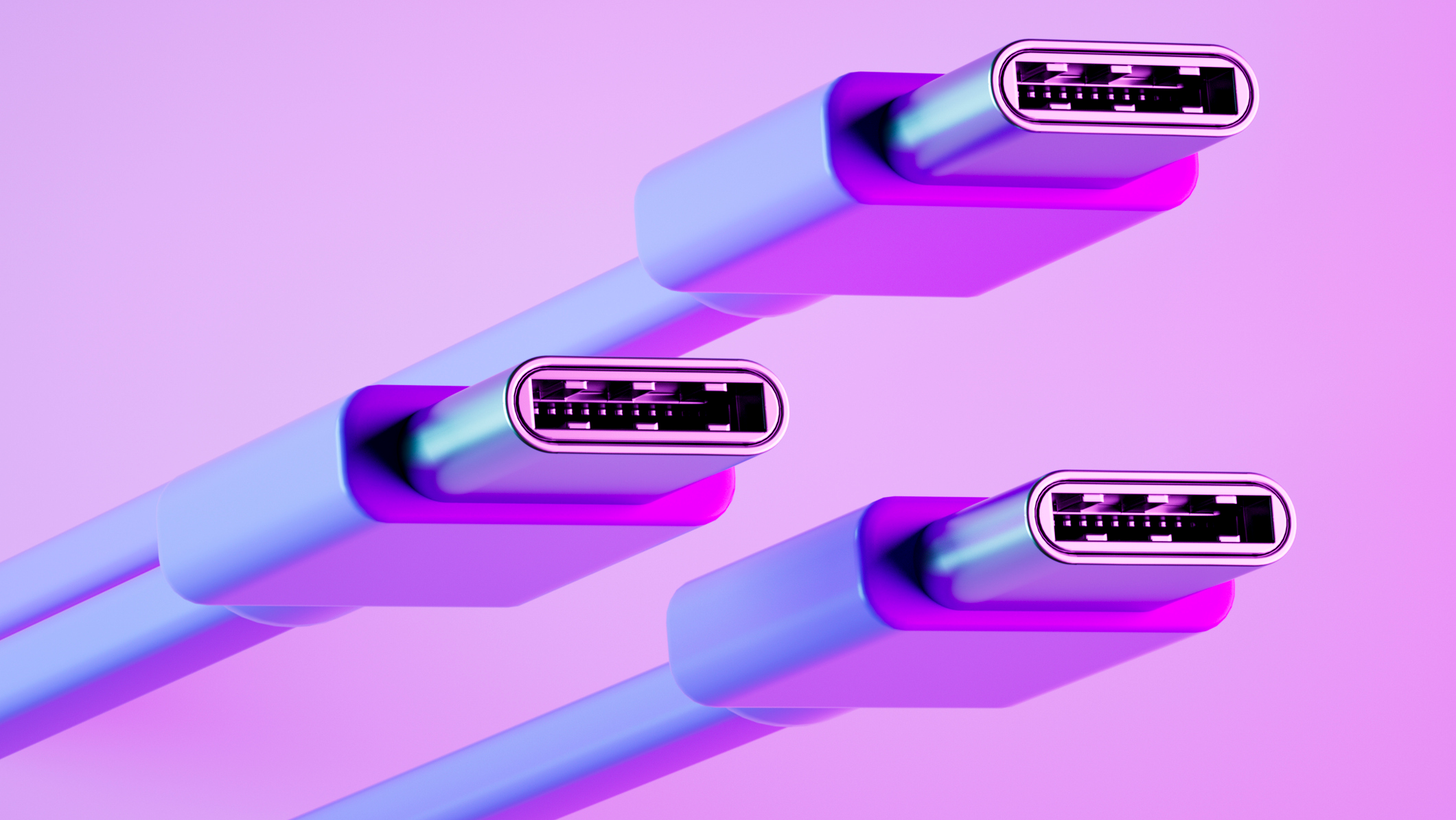Power bricks and wall warts for EU market must include detachable USB-C cables by 2028 — New legislation also adds power rating labels for cables

The standardization of USB-C on phones and tablets received a big push by the EU's 2024 mandate, which also includes a similar provision for laptops come 2026. This time around, the bloc is aiming for a 2028 standardization of power bricks and wall warts on USB-C with detachable cables for a good chunk of consumer electronics, including gaming consoles, monitors, routers, wireless chargers, set-top boxes, and even Ethernet PoE injectors.
The new EU legislation targets power units of all types, referring to them as External Power Supplies (EPS). The primary goals are interoperability and sustainability, allowing buyers to use one EPS and/or cable for multiple devices, as is already the case for phones and tablets. The refreshed laws apply to power supplies of up to 240 W, requiring them to include at least one USB-C port and have a detachable cable. Naturally, the power delivery comes by way of the USB-PD standard.
The legislation also forces manufacturers to display power ratings on the EPS itself, the charging port, and even the cables themselves. The rated wattage must be for continuous charging without voltage drops, presumably to prevent inflated, unrealistic figures. A new "Common Charger" logo should make it easy for users to identify compliant chargers.
On the efficiency front, the laws say that EPS units capable of pushing more than 10 W (nearly all of them) must have minimum efficiency requirements at 10% rated load, and "more stringent" average and no-load efficiency requirements. Likewise, wireless charging pads must have lower idle power consumption, and their power supply circuit should be external so that it's replaceable and/or reusable.
Interestingly, the technical requirements also include a level of mandatory surge protection, as wall-warts for routers and Wi-Fi APs tend to include such measures. Some categories of devices are excluded from these requirements, namely, but not limited to, UPS units, medical devices, certain toys, electric scooters and bikes, emergency lighting control gear, and devices for use in wet conditions.
The law also notes that stand-alone EPS (such as third-party chargers) are covered, as well as manufacturer-supplied units. It's perhaps worth noting that, contrary to popular belief, the EU does not prevent manufacturers from bundling a power supply or charger with a device (looking at you, Apple, Google, & Co).
Besides the practical benefits to consumers, the EU expects these measures to save 1,070 TWh per year by 2030, as it estimates that 400 million ESDs are sold with devices every year. Ironically, these new laws arguably do a better job of standardizing USB-C power delivery than the USB-IF standards body and its alphabet soup.
Get Tom's Hardware's best news and in-depth reviews, straight to your inbox.

Bruno Ferreira is a contributing writer for Tom's Hardware. He has decades of experience with PC hardware and assorted sundries, alongside a career as a developer. He's obsessed with detail and has a tendency to ramble on the topics he loves. When not doing that, he's usually playing games, or at live music shows and festivals.
-
Notton ReplyThe rated wattage must be for continuous charging without voltage drops, presumably to prevent inflated, unrealistic figures.
Apple ahead of the curve for once with their 40W (60W max) dynamic charger.
I have a collection of USB-C GaN chargers, and the general impression I have with them is there is no holy grail yet. There are many features, but not all of them compatible with each other.
High continuous power output is usually not compact or cool running.
Power efficient and cool running is usually not cheap, unless low wattage.
Extra safety features, especially graceful ones, and UL/TUV/ETL/CSA/PSE, etc. safety ratings are never cheap.
It's too easy finding a cheap 120W charger that hits 80c (176f) externally after extended use. -
S58_is_the_goat Reply
I was shocked when my 65w charger hit 75c thought it was a defect and returned it but it seems this it normal.Notton said:Apple ahead of the curve for once with their 40W (60W max) dynamic charger.
I have a collection of USB-C GaN chargers, and the general impression I have with them is there is no holy grail yet. There are many features, but not all of them compatible with each other.
High continuous power output is usually not compact or cool running.
Power efficient and cool running is usually not cheap, unless low wattage.
Extra safety features, especially graceful ones, and UL/TUV/ETL/CSA/PSE, etc. safety ratings are never cheap.
It's too easy finding a cheap 120W charger that hits 80c (176f) externally after extended use. -
reachmyeyes I just hope we see a LOT more of this, imagine if companies were forced to make ssd's replaceable and certain ports mandatory? No more dongles and tens of millions of tonnes saved from landfill when devices get a 10 year plus life span.Reply -
bit_user I fully support the notion of USB-C for charging and small external PSUs. However, I just wonder if the security risks of relying exclusively on USB have been adequately mitigated by devices? It seems to me like it could be worth having a "power-only" cable standard, at the risk of causing further USB fragmentation.Reply -
einheriar I can already hear apple moan and whine about doing that. Anything to stop common sense progress that does not lock in their own apple ecosystem is the end of the world according to theReply
"Fruit of the Doom " tech company -
edzieba ReplyNotton said:It's too easy finding a cheap 120W charger that hits 80c (176f) externally after extended use.
The entire purpose of using GaN rather than Si MOSFETs in the first place is that they can operate at far higher temperatures. Hotter operation means more effective thermal solutions (larger thermal gradient to the surrounding air) so devices can be smaller for the same output power.S58_is_the_goat said:I was shocked when my 65w charger hit 75c thought it was a defect and returned it but it seems this it normal. -
Notton Reply
Yes, GaN allows the device to run hotter, but my fingers can only handle a certain amount of heat before suffering 1st degree burns when I go to unplug it from the wall.edzieba said:The entire purpose of using GaN rather than Si MOSFETs in the first place is that they can operate at far higher temperatures. Hotter operation means more effective thermal solutions (larger thermal gradient to the surrounding air) so devices can be smaller for the same output power.
Compact chargers fit into tighter spaces, and if you're not careful with its heat ventilation, will overheat.
I've seen an off-brand GaN charger melt from its own heat output. You're mostly safe if you stick to major brands that have the proper certifications. -
TerryLaze Reply
I don't think that it's a standard but there definitely are USB cables (for the old USB) that only have the two power wires and lack the two data wires, I guess if you make millions of cables the cost adds up enough for them to make cheaper cables by having less wires.bit_user said:I fully support the notion of USB-C for charging and small external PSUs. However, I just wonder if the security risks of relying exclusively on USB have been adequately mitigated by devices? It seems to me like it could be worth having a "power-only" cable standard, at the risk of causing further USB fragmentation.
I don't know if that's also still happening with USB-C as well, but it would stand to reason that it's still cheaper to omit wires and that they are still doing it.
Also if they want security the device maker could put in a separate USB plug just for power that doesn't connect as an actual USB. -
arguepretzel I would love for them to also ban creating products like laptops, chargers, and computers that still have USB-A ports. It's so hard to find new tech that doesn't come with obsolete USB-A ports that we should be completely eliminating from our lives by now. USB-A is still showing up everywhere on new products.Reply
Also, I do appreciate and Apple and Google no longer ship charging bricks with their phones. Most of us already have a drawer full of those and we don't need another one with every device. -
USAFRet Reply
So I'd need to buy a new mouse and keyboard?arguepretzel said:I would love for them to also ban creating products like laptops, chargers, and computers that still have USB-A ports. It's so hard to find new tech that doesn't come with obsolete USB-A ports that we should be completely eliminating from our lives by now. USB-A is still showing up everywhere on new products.